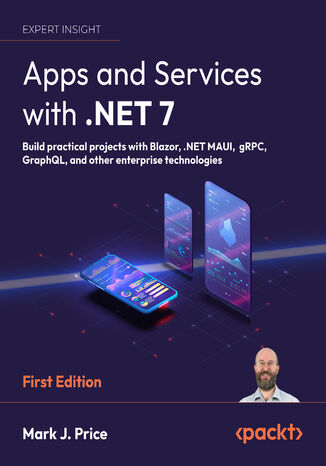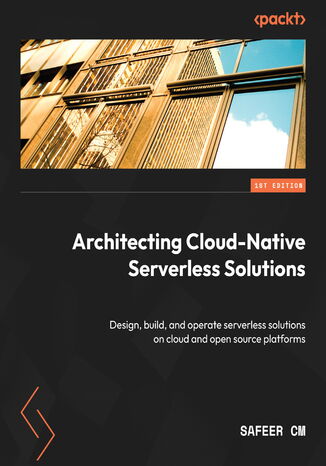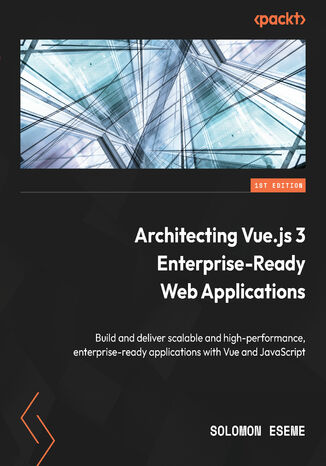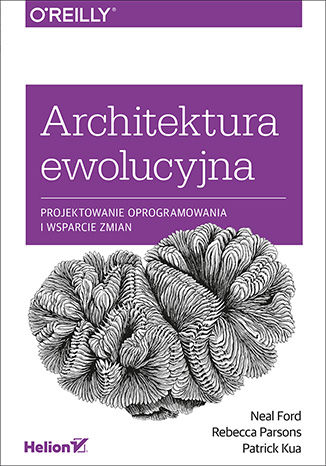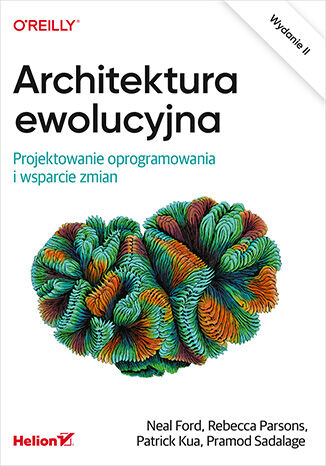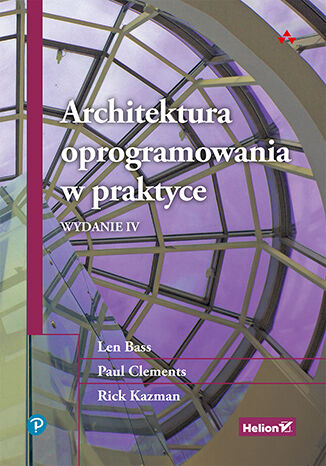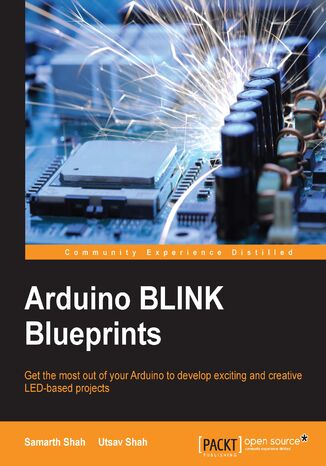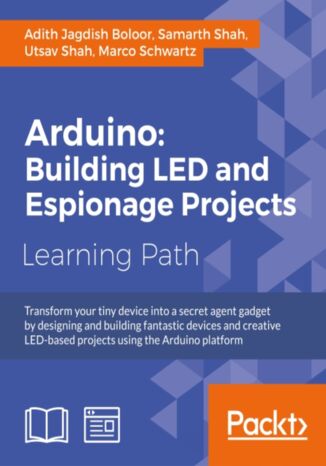Kategorien
E-Books
-
Wirtschaft
- Bitcoin
- Geschäftsfrau
- Coaching
- Controlling
- E-Business
- Ökonomie
- Finanzen
- Börse und Investitionen
- Persönliche Kompetenzen
- Computer im Büro
- Kommunikation und Verhandlungen
- Kleines Unternehmen
- Marketing
- Motivation
- Multimedia-Training
- Immobilien
- Überzeugung und NLP
- Steuern
- Sozialpolitik
- Handbȕcher
- Präsentationen
- Führung
- Public Relation
- Berichte, Analysen
- Geheimnis
- Social Media
- Verkauf
- Start-up
- Ihre Karriere
- Management
- Projektmanagement
- Personal (HR)
-
Für Kinder
-
Für Jugendliche
-
Bildung
-
Enzyklopädien, Wörterbücher
-
E-Presse
- Architektura i wnętrza
- Sicherheit und Gesundheit am Arbeitsplatz
- Biznes i Ekonomia
- Haus und Garten
- E-Business
- Ekonomia i finanse
- Esoterik
- Finanzen
- Persönliche Finanzen
- Unternehmen
- Fotografie
- Informatik
- HR und Gehaltsabrechnung
- Frauen
- Computer, Excel
- Buchhaltung
- Kultur und Literatur
- Wissenschaftlich und akademisch
- Umweltschutz
- meinungsbildend
- Bildung
- Steuern
- Reisen
- Psychologie
- Religion
- Landwirtschaft
- Buch- und Pressemarkt
- Transport und Spedition
- Gesundheit und Schönheit
-
Geschichte
-
Informatik
- Office-Programme
- Datenbank
- Bioinformatik
- IT Branche
- CAD/CAM
- Digital Lifestyle
- DTP
- Elektronik
- Digitale Fotografie
- Computergrafik
- Spiele
- Hacking
- Hardware
- IT w ekonomii
- Wissenschaftliche Pakete
- Schulbücher
- Computergrundlagen
- Programmierung
- Mobile-Programmierung
- Internet-Server
- Computernetzwerke
- Start-up
- Betriebssysteme
- Künstliche Inteligenz
- Technik für Kinder
- Webmaster
-
Andere
-
Fremdsprachen lernen
-
Kultur und Kunst
-
Lektüre
-
Literatur
- Anthologien
- Ballade
- Biografien und Autobiografien
- Für Erwachsene
- Drama
- Tagebücher, Memoiren, Briefe
- Epos
- Essay
- Science Fiction
- Felietonys
- Fiktion
- Humor, Satire
- Andere
- Klassisch
- Krimi
- Sachbücher
- Belletristik
- Mity i legendy
- Nobelpreisträger
- Kurzgeschichten
- Gesellschaftlich
- Okultyzm i magia
- Erzählung
- Erinnerungen
- Reisen
- Gedicht
- Poesie
- Politik
- Populärwissenschaftlich
- Roman
- Historischer Roman
- Prosa
- Abenteuer
- Journalismus
- Reportage
- Romans i literatura obyczajowa
- Sensation
- Thriller, Horror
- Interviews und Erinnerungen
-
Naturwissenschaften
-
Sozialwissenschaften
-
Schulbücher
-
Populärwissenschaft und akademisch
- Archäologie
- Bibliotekoznawstwo
- Filmwissenschaft
- Philologie
- Polnische Philologie
- Philosophie
- Finanse i bankowość
- Erdkunde
- Wirtschaft
- Handel. Weltwirtschaft
- Geschichte und Archäologie
- Kunst- und Architekturgeschichte
- Kulturwissenschaft
- Linguistik
- Literaturwissenschaft
- Logistik
- Mathematik
- Medizin
- Geisteswissenschaften
- Pädagogik
- Lehrmittel
- Populärwissenschaftlich
- Andere
- Psychologie
- Soziologie
- Theatrologie
- Teologie
- Theorien und Wirtschaftswissenschaften
- Transport i spedycja
- Sportunterricht
- Zarządzanie i marketing
-
Handbȕcher
-
Spielanleitungen
-
Professioneller und fachkundige Leitfaden
-
Jura
- Sicherheit und Gesundheit am Arbeitsplatz
- Geschichte
- Verkehrsregeln. Führerschein
- Rechtswissenschaften
- Gesundheitswesen
- Allgemeines. Wissenskompendium
- akademische Bücher
- Andere
- Bau- und Wohnungsrecht
- Zivilrecht
- Finanzrecht
- Wirtschaftsrecht
- Wirtschafts- und Handelsrecht
- Strafrecht
- Strafrecht. Kriminelle Taten. Kriminologie
- Internationales Recht
- Internationales und ausländisches Recht
- Gesundheitsschutzgesetz
- Bildungsrecht
- Steuerrecht
- Arbeits- und Sozialversicherungsrecht
- Öffentliches, Verfassungs- und Verwaltungsrecht
- Familien- und Vormundschaftsrecht
- Agrarrecht
- Sozialrecht, Arbeitsrecht
- EU-Recht
- Industrie
- Agrar- und Umweltschutz
- Wörterbücher und Enzyklopädien
- Öffentliche Auftragsvergabe
- Management
-
Führer und Reisen
- Afrika
- Alben
- Südamerika
- Mittel- und Nordamerika
- Australien, Neuseeland, Ozeanien
- Österreich
- Asien
- Balkan
- Naher Osten
- Bulgarien
- China
- Kroatien
- Tschechische Republik
- Dänemark
- Ägypten
- Estland
- Europa
- Frankreich
- Berge
- Griechenland
- Spanien
- Niederlande
- Island
- Litauen
- Lettland
- Mapy, Plany miast, Atlasy
- Miniführer
- Deutschland
- Norwegen
- Aktive Reisen
- Polen
- Portugal
- Andere
- Przewodniki po hotelach i restauracjach
- Russland
- Rumänien
- Slowakei
- Slowenien
- Schweiz
- Schweden
- Welt
- Türkei
- Ukraine
- Ungarn
- Großbritannien
- Italien
-
Psychologie
- Lebensphilosophien
- Kompetencje psychospołeczne
- zwischenmenschliche Kommunikation
- Mindfulness
- Allgemeines
- Überzeugung und NLP
- Akademische Psychologie
- Psychologie von Seele und Geist
- Arbeitspsychologie
- Relacje i związki
- Elternschafts- und Kinderpsychologie
- Problemlösung
- Intellektuelle Entwicklung
- Geheimnis
- Sexualität
- Verführung
- Aussehen ind Image
- Lebensphilosophien
-
Religion
-
Sport, Fitness, Diäten
-
Technik und Mechanik
Hörbücher
-
Wirtschaft
- Bitcoin
- Geschäftsfrau
- Coaching
- Controlling
- E-Business
- Ökonomie
- Finanzen
- Börse und Investitionen
- Persönliche Kompetenzen
- Kommunikation und Verhandlungen
- Kleines Unternehmen
- Marketing
- Motivation
- Immobilien
- Überzeugung und NLP
- Steuern
- Sozialpolitik
- Handbȕcher
- Präsentationen
- Führung
- Public Relation
- Geheimnis
- Social Media
- Verkauf
- Start-up
- Ihre Karriere
- Management
- Projektmanagement
- Personal (HR)
-
Für Kinder
-
Für Jugendliche
-
Bildung
-
Enzyklopädien, Wörterbücher
-
E-Presse
-
Geschichte
-
Informatik
-
Andere
-
Fremdsprachen lernen
-
Kultur und Kunst
-
Lektüre
-
Literatur
- Anthologien
- Ballade
- Biografien und Autobiografien
- Für Erwachsene
- Drama
- Tagebücher, Memoiren, Briefe
- Epos
- Essay
- Science Fiction
- Felietonys
- Fiktion
- Humor, Satire
- Andere
- Klassisch
- Krimi
- Sachbücher
- Belletristik
- Mity i legendy
- Nobelpreisträger
- Kurzgeschichten
- Gesellschaftlich
- Okultyzm i magia
- Erzählung
- Erinnerungen
- Reisen
- Poesie
- Politik
- Populärwissenschaftlich
- Roman
- Historischer Roman
- Prosa
- Abenteuer
- Journalismus
- Reportage
- Romans i literatura obyczajowa
- Sensation
- Thriller, Horror
- Interviews und Erinnerungen
-
Naturwissenschaften
-
Sozialwissenschaften
-
Populärwissenschaft und akademisch
- Archäologie
- Philosophie
- Wirtschaft
- Handel. Weltwirtschaft
- Geschichte und Archäologie
- Kunst- und Architekturgeschichte
- Kulturwissenschaft
- Literaturwissenschaft
- Mathematik
- Medizin
- Geisteswissenschaften
- Pädagogik
- Lehrmittel
- Populärwissenschaftlich
- Andere
- Psychologie
- Soziologie
- Teologie
- Zarządzanie i marketing
-
Handbȕcher
-
Professioneller und fachkundige Leitfaden
-
Jura
-
Führer und Reisen
-
Psychologie
- Lebensphilosophien
- zwischenmenschliche Kommunikation
- Mindfulness
- Allgemeines
- Überzeugung und NLP
- Akademische Psychologie
- Psychologie von Seele und Geist
- Arbeitspsychologie
- Relacje i związki
- Elternschafts- und Kinderpsychologie
- Problemlösung
- Intellektuelle Entwicklung
- Geheimnis
- Sexualität
- Verführung
- Aussehen ind Image
- Lebensphilosophien
-
Religion
-
Sport, Fitness, Diäten
-
Technik und Mechanik
Videokurse
-
Datenbank
-
Big Data
-
Biznes, ekonomia i marketing
-
Cybersicherheit
-
Data Science
-
DevOps
-
Für Kinder
-
Elektronik
-
Grafik / Video / CAX
-
Spiele
-
Microsoft Office
-
Entwicklungstools
-
Programmierung
-
Persönliche Entwicklung
-
Computernetzwerke
-
Betriebssysteme
-
Softwaretest
-
Mobile Geräte
-
UX/UI
-
Web development
-
Management
Podcasts
- E-Books
- Programmierung
- Programmiertechniken
Programmiertechniken
Apps and Services with .NET 7 is for .NET 6 and .NET 7 developers who want to kick their C# and .NET understanding up a gear by learning the practical skills and knowledge they need to build real-world applications and services. It covers specialized libraries that will help you monitor and improve performance, secure your data and applications, and internationalize your code and apps.With chapters that put a variety of technologies into practice, including Web API, OData, gRPC, GraphQL, SignalR, and Azure Functions, this book will give you a broader scope of knowledge than other books that often focus on only a handful of .NET technologies. It covers the latest developments, libraries, and technologies that will help keep you up to date.You’ll also leverage .NET MAUI to develop mobile apps for iOS and Android as well as desktop apps for Windows and macOS.
Serverless computing has emerged as a mainstream paradigm in both cloud and on-premises computing, with AWS Lambda playing a pivotal role in shaping the Function-as-a-Service (FaaS) landscape. However, with the explosion of serverless technologies and vendors, it has become increasingly challenging to comprehend the foundational services and their offerings.Architecting Cloud Native Serverless Solutions lays a strong foundation for understanding the serverless landscape and technologies in a vendor-agnostic manner. You'll learn how to select the appropriate cloud vendors and technologies based on your specific needs. In addition, you'll dive deep into the serverless services across AWS, GCP, Azure, and Cloudflare followed by open source serverless tools such as Knative, OpenFaaS, and OpenWhisk, along with examples. You'll explore serverless solutions on Kubernetes that can be deployed on both cloud-hosted clusters and on-premises environments, with real-world use cases. Furthermore, you'll explore development frameworks, DevOps approaches, best practices, security considerations, and design principles associated with serverless computing.By the end of this serverless book, you'll be well equipped to solve your business problems by using the appropriate serverless vendors and technologies to build efficient and cost-effective serverless systems independently.
Building enterprise-ready Vue.js apps entails following best practices for creating high-performance and scalable applications. Complete with step-by-step explanations and best practices outlined, this Vue.js book is a must-read for any developer who works with a large Vue.js codebase where performance and scalability are indispensable.Throughout this book, you’ll learn how to configure and set up Vue.js 3 and the composition API and use it to build real-world applications. You’ll develop the skills to create reusable components and scale performance in Vue.js 3 applications. As you progress, the book guides you in scaling performance with asynchronous lazy loading, image compression, code splitting, and tree shaking. Furthermore, you’ll see how to use the Restful API, Docker, GraphQL, and different types of testing to ensure that your Vue.js 3 application is scalable and maintainable.By the end of this book, you’ll be well-versed in best practices for implementing Restful API, Docker, GraphQL, and testing methods to build and deploy an enterprise-ready Vue.js 3 application of any scale.
Architektura ewolucyjna. Projektowanie oprogramowania i wsparcie zmian
Neal Ford, Rebecca Parsons, Patrick Kua
Przez długi czas uważano, że architektura oprogramowania powinna powstać przed rozpoczęciem pisania kodu i pozostać niezmieniona aż do zakończenia projektu. Pojawienie się zwinnych metod tworzenia oprogramowania spowodowało, że taką koncepcję zaczęto podawać w wątpliwość. Niektórzy nawet kwestionowali potrzebę tworzenia architektury, gdyż utrudniała reakcję na zmiany wymagań. Istnieje jednak inne podejście do architektury, zgodnie z którym jest ona ściśle powiązana z fazą programowania i dynamicznie odpowiada na zmiany pojawiające się podczas tworzenia kodu. W ten sposób architektura ewolucyjna, pomimo nieprzewidywalności zmian, zapewnia rozwój projektu we właściwym kierunku. Dzięki tej książce architekci oprogramowania zapoznają się z nowym podejściem do powiązań architektury z czasem. Przekonają się też, że tworzenie architektury ewolucyjnej sprowadza się do trzech głównych zagadnień: funkcji dopasowania, zmian przyrostowych i prawidłowego sprzęgania. W tej książce uwzględniono analizę każdego z tych aspektów, ukazano też mechanizm budowania architektury wspierającej ciągłe zmiany. Szczegółowo wyjaśniono zasady wprowadzania pętli informacji zwrotnej pozwalających całemu zespołowi na spójne rozwijanie systemu w zgodzie z zasadą ciągłego dostarczania. Pokazano metody monitorowania stanu architektury. Sporo uwagi poświęcono problemom danych długowiecznych - jest to często pomijane zagadnienie. W tej książce: Funkcje dopasowania w architekturze Zmiany przyrostowe wprowadzane za pomocą projektowania i operacji Sprzężenie architektury i wprowadzanie zmian bez utraty stabilności systemu Dane ewolucyjne oraz zmiany wymogów i architektury w miarę upływu czasu Budowanie architektur ewolucyjnych Praktyczne wdrażanie architektury ewolucyjnej w korporacji Architektura korporacyjna: wysoka sztuka projektowania!
Architektura ewolucyjna. Projektowanie oprogramowania i wsparcie zmian. Wydanie II
Neal Ford, Rebecca Parsons, Patrick Kua, Pramod Sadalage
Jeszcze kilka lat temu koncepcja ewoluowania architektury była uznawana za zbyt odważną. Uważano, że architektura powinna pozostawać elementem niezmiennym w czasie. Jednak rzeczywistość udowadnia, że systemy muszą ewoluować, aby spełniać wymogi użytkowników i odzwierciedlać zmiany w dynamicznym środowisku tworzenia oprogramowania. Innymi słowy, konieczne się staje budowanie architektur ewolucyjnych. Dzięki tej książce dowiesz się, w jaki sposób uczynić architekturę oprogramowania wystarczająco plastyczną, aby mogła odzwierciedlać zachodzące zmiany biznesowe i technologiczne. W nowym wydaniu rozbudowano pojęcia zmiany kierowanej i przyrostowej, a także przedstawiono najnowsze techniki dotyczące funkcji dopasowania, automatycznego zarządzania architekturą i danych ewolucyjnych. Zaprezentowano praktyki inżynieryjne umożliwiające ewoluowanie systemów oprogramowania, jak również podejścia strukturalne, w tym zasady projektowe, które ułatwiają zarządzanie tą ewolucją. Opisano ponadto, w jaki sposób zasady i praktyki architektury ewolucyjnej wiążą się z różnymi elementami procesu tworzenia oprogramowania. Naucz się postrzegać architekturę systemową jako plastyczny wyzwalacz. Sam Newman, architekt, autor książki Budowanie mikrousług Najciekawsze zagadnienia: mechanika architektury ewolucyjnej zarządzanie projektami oprogramowania i ich ewolucją style architektoniczne i zasady projektowania sprzęganie i wieloużywalność łączenie praktyk inżynieryjnych z kwestiami strukturalnymi Poznaj techniki umożliwiające tworzenie architektur oprogramowania na tyle zwinnych, aby dotrzymywały kroku ciągłym zmianom. Mark Richards, developertoarchitect.com
Architektura oprogramowania w praktyce. Wydanie IV
Len Bass, Paul Clements, Rick Kazman
To kompletny, praktyczny i sprawdzony przewodnik po tworzeniu architektury nowoczesnego oprogramowania, w pełni zaktualizowany o nowe materiały poświęcone rozwiązaniom mobilnym, chmurze, zarządzaniu energią, podejściu DevOps, przetwarzaniu kwantowemu i innym zagadnieniom. Zaktualizowana o 11 nowych rozdziałów książka Architektura oprogramowania w praktyce, wydanie czwarte dokładnie wyjaśnia, czym jest architektura oprogramowania, dlaczego ma ona znaczenie, a także jak ją projektować, tworzyć, analizować i modyfikować oraz jak nią zarządzać w zdyscyplinowany i skuteczny sposób. Trzech poważanych architektów oprogramowania omawia cały cykl życia, prezentując praktyczne wskazówki, metody stosowane przez ekspertów i sprawdzone modele przydatne w każdym projekcie niezależnie od poziomu jego złożoności. Dowiesz się, jak za pomocą architektury radzić sobie z coraz większymi wymaganiami i systemami oraz wyższym poziomem abstrakcji, a także jak uzyskiwać emergentne atrybuty jakościowe, gdy systemy są dynamicznie łączone na nowe sposoby. W tym podręczniku znajdziesz informacje na temat optymalizowania za pomocą architektury najważniejszych atrybutów jakościowych (w tym wydajności, modyfikowalności, zabezpieczeń, dostępności, współdziałania, testowalności, użyteczności, łatwości wdrażania itd.), co pomoże Ci zrozumieć, jak zarządzać istniejącymi architekturami, dopracowywać je, przekształcać w celu rozwiązywania nowych problemów i tworzyć architektury wielokrotnego użytku, które stają się strategicznymi aktywami biznesowymi. Zobacz, jak architektura wpływa na środowisko techniczne, cykle życia projektów, profile biznesowe i Twoją pracę, a także jak te czynniki wpływają na architekturę. Wykorzystaj sprawdzone wzorce, interfejsy i praktyki do optymalizowania jakości za pomocą architektury. Twórz architekturę z myślą o rozwiązaniach mobilnych, chmurze, uczeniu maszynowym i przetwarzaniu kwantowym. Projektuj systemy pod kątem coraz ważniejszych atrybutów takich jak wydajność energetyczna i bezpieczeństwo. Skaluj systemy, odkrywając czynniki istotne architektonicznie, stosując podejście DevOps i potoki wdrażania oraz zarządzając długiem architektonicznym. Poznaj rolę architektury w organizacji, co pozwoli Ci tworzyć bardziej wartościowe rozwiązania.
Arduino is an open-source prototyping platform based on easy-to-use hardware and software. Arduino has been used in thousands of different projects and applications by a wide range of programmers and artists, and their contributions have added up to an incredible amount of accessible knowledge that can be of great help to novices and experts alike.Want to build exciting LED projects with Arduino? This book will be your companion to bring out the creative genius in you. To begin with, you will get introduced to the maker movement and the open source hardware development Arduino boards. You will then move on to develop a mood lamp and a remote-controlled TV backlight. As you progress through the book, you will develop an LED cube and will learn to use sound visualization to develop a sound-controlled LED Christmas tree. You will then move on to build a persistence of vision wand.At the end of each chapter, you’ll see some common problems, their solutions, and some workarounds.
Arduino: Building exciting LED based projects and espionage devices. Click here to enter text
Utsav Shah, Marco Schwartz, Adith Jagdish Boloor, Samarth Shah
An Arduino might be a tiny computer but it can be used as the foundation for a huge range of projects. In this course, we’ll show you how just some of the projects that are possible with an Arduino. From robotics to secret agent gadgets, we’re pretty confident that this course will get you thinking creatively – and inspire you to create your very own new projects using the Arduino hacking skills you learn.This course, combines both text and video content – it’s made up of three modules to help organize your learning. In the first module we’ll show you how to build three different Arduino projects. All of these will not only get you up and running with something practical, they’ll also help you better understand how the Arduino works. Find out how to develop a home automation system and even build a robot!In the second module we’ll go one step further to help you get creative as you learn how to program LEDs with your Arduino. You’ll find out how to build a mood lamp and a remote-controlled TV backlight, before going on to make a sound controlled LED Christmas tree that makes use of sound visualization.Finally, the third module takes you from stylish design into espionage, as you learn how to create neat secret agent gadgets with your Arduino. Find out how to build an alarm system, a fingerprint sensor, even open a lock with a text message. And that’s not all – but to find out more you’ll have to dive in!This Learning Path combines some of the best that Packt has to offer in one complete, curated package. It includes content from the following Packt products:?Arduino By Example by Adith Jagdish Boloor?Arduino BLINK Blueprints by Samarth Shah, Utsav Shah?Arduino for Secret Agents by Marco Shwartz

